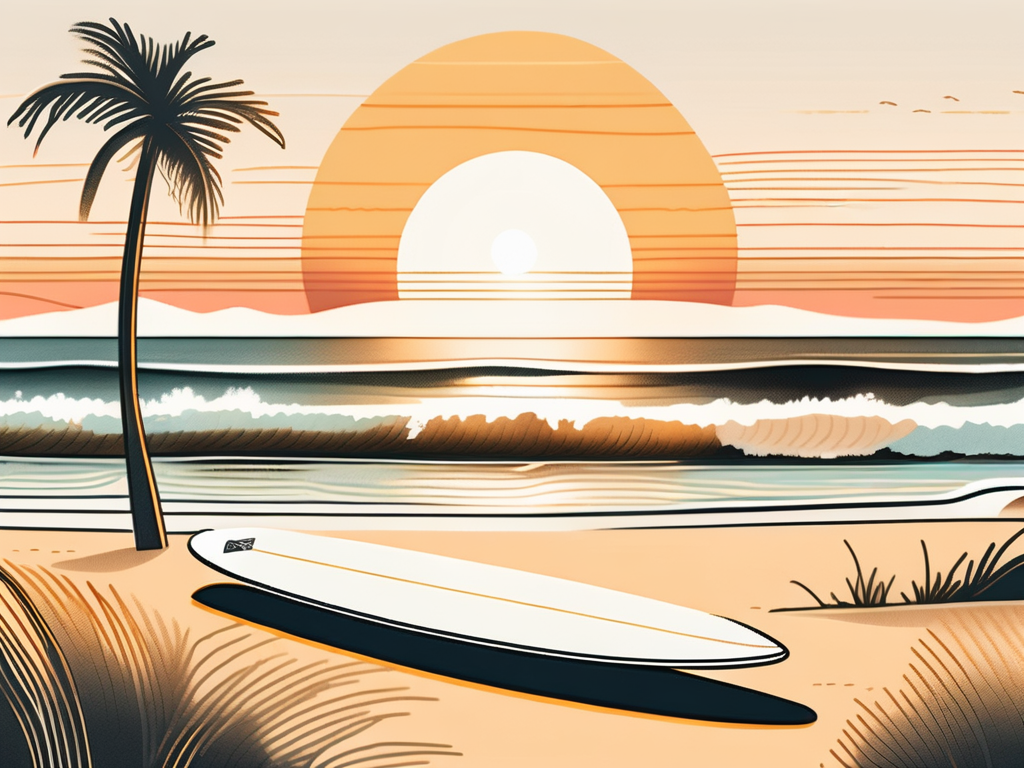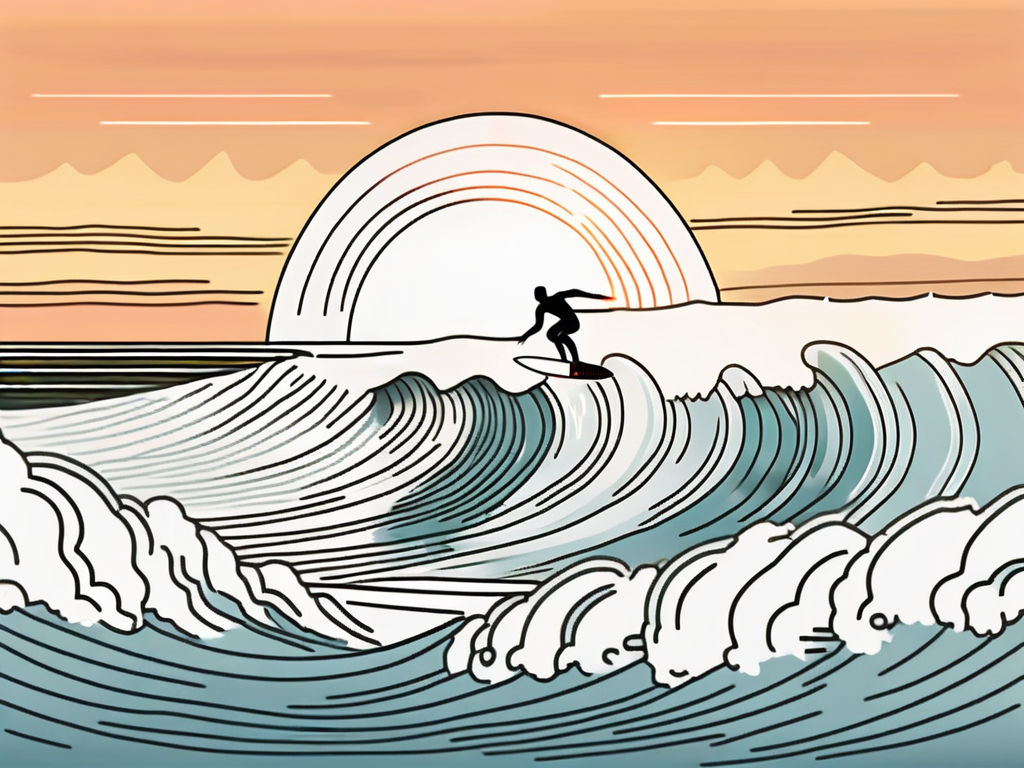Are you ready to embark on an exciting journey into the world of surfing? Whether you're a complete novice or have dabbled in the sport before, this ultimate guide is here to help you master the art of riding the waves. From understanding the fundamentals to selecting the perfect gear, we've got you covered. Let's dive in and discover everything you need to know to start your surfing adventure.
Understanding the Fundamentals of Surfing
Before you hit the waves, it's crucial to familiarize yourself with the essential rules of surfing. These rules not only ensure your safety but also contribute to a positive and enjoyable surfing experience for everyone. So, let's take a look at what every surfer should know:
The Essential Rules Every Surfer Should Know
1. Respect the lineup: When paddling out, it's important to respect the surfers already in the lineup. Wait for your turn and avoid dropping in on someone else's wave.
2. Priority rules: Understand the rules of priority in the lineup. Generally, the surfer closest to the breaking part of the wave has the right of way.
3. Safety first: Always be aware of your surroundings and prioritize safety. Pay attention to other surfers, potential hazards, and changing conditions.
Now that you have a good understanding of the rules, let's move on to finding the perfect surf spot away from the crowds.
Finding the Perfect Surf Spot
When searching for the ideal surf spot, consider factors such as wave quality, crowd levels, and accessibility. A great surf spot should offer consistent waves suitable for your skill level while providing a welcoming and friendly atmosphere.
One way to discover hidden gems is to explore lesser-known beaches or breaks that may not be as popular but still offer fantastic surfing conditions. These spots often provide a more intimate surfing experience away from the hustle and bustle of crowded beaches.
Discovering Serene Surf Spots Away from the Crowds
Surfing in a peaceful and uncrowded location can greatly enhance your surfing experience. The tranquility of the surroundings, the sound of the waves crashing against the shore, and the feeling of being one with nature can create a truly magical experience for any surfer. Away from the hustle and bustle of crowded surf breaks, you can truly immerse yourself in the beauty of the ocean and focus on honing your skills without distractions.
Here are some tips for finding your perfect surfing location:
Tips for Finding Your Perfect Surfing Location
1. Research local breaks: Use online resources, surf reports, and local knowledge to find lesser-known surf spots that are not overcrowded. These hidden gems may require a bit more effort to reach but can offer incredible waves and a sense of serenity that is hard to find at popular surf spots.
2. Time your sessions: Plan your surf sessions early in the morning or later in the evening when there are fewer people in the water. Not only will you have more space to catch waves, but you'll also get to witness stunning sunrises or sunsets, adding to the overall experience.
3. Explore off the beaten path: Be willing to venture off the popular surf routes and explore hidden gems that are less frequented by other surfers. Sometimes, the most memorable surf sessions happen in remote locations where you can connect with nature on a deeper level.
Now that you've discovered a serene surf spot, it's time to equip yourself with the essential gear. Having the right surfboard, wetsuit, leash, and other accessories can make a significant difference in your performance and comfort in the water. Additionally, consider investing in eco-friendly surf products to minimize your environmental impact and help preserve the beauty of the oceans for future generations.
Selecting the Perfect Gear for Your Surfing Adventure
The right gear can make a world of difference in your surfing performance and experience. As a beginner, here is the essential equipment you'll need:

Essential Equipment for Beginner Surfers
- A beginner-friendly surfboard: Opt for a longboard or a foam board, as these offer stability and buoyancy, making it easier to catch waves.
- A wetsuit or rash guard: Depending on the water temperature, choose an appropriate wetsuit or rash guard to keep you warm and protected from the sun.
- Surf wax or traction pad: Apply surf wax on the deck of your board to provide grip, or consider using a traction pad for added stability.
- Leash: A leash attaches your surfboard to your ankle, preventing it from drifting away if you fall off.
- Sunscreen: Protect your skin from the harmful effects of the sun by applying waterproof sunscreen with a high SPF.
Now that you're all geared up, it's time to learn one of the most fundamental skills in surfing - the pop-up.
Perfecting the Pop-Up: A Surfer's Essential Skill
The pop-up is the transition from lying down on your board to standing up, and it's a crucial skill for any surfer. Here are some tips to help you master this skill:
Mastering the Art of Standing Up on Your Surfboard
1. Practice on land: Before heading into the water, practice your pop-up on a stable surface to get the movement and timing down.
2. Start slow: Begin by popping up to a kneeling position and then progress to standing up gradually. This allows you to build stability and confidence.
3. Use your arms: As you pop up, use your arms for balance and to generate momentum. They should extend forward and then swing back as you rise to your feet.
With the pop-up technique in your arsenal, it's time to focus on improving your paddling technique.
Improving Your Paddling Technique for Better Surfing
Effective paddling is crucial for catching waves and maneuvering through the lineup. Here's how you can build strength and enhance your endurance:
How to Build Strength and Endurance for Effective Paddling
1. Include swimming in your routine: Swimming is a fantastic exercise to strengthen your upper body and improve overall endurance.
2. Practice paddling drills: Set up markers in the water and practice paddling between them. Push yourself to increase your speed and distance over time.
3. Incorporate cross-training: Engage in exercises like yoga, Pilates, or weightlifting to strengthen the different muscle groups used in paddling.
Now that you've mastered the paddle, it's time to navigate the lineup like a pro.
Navigating the Line-Up Like a Pro
The lineup can be a busy and competitive place, but with the right strategies, you can make your way through smoothly. Here's what you need to know:

Strategies for Getting Through the Surf Line-Up Safely
1. Be patient: Avoid rushing into the lineup. Take your time, observe the pattern of the waves, and choose the right moment to paddle out.
2. Communicate with other surfers: Use hand signals or friendly gestures to communicate your intentions and establish a respectful rapport with fellow surfers.
3. Maintain control: Stay in control of your board and be aware of others around you. Try to avoid collisions and give way to surfers on the wave.
With these strategies in mind, you're ready to tackle the waves confidently and with an understanding of the dynamics of the ocean.
Understanding the Dynamics of the Ocean for Surfers
The ocean is a complex and ever-changing environment. Equipping yourself with the knowledge of its dynamics will greatly enhance your surfing abilities. Here's what you need to know:
Reading Waves and Currents for a Successful Surf Session
1. Understanding wave types: Learn to differentiate between different types of waves, such as beach breaks, point breaks, and reef breaks. Each type requires different approaches and techniques.
2. Observing currents: Pay attention to the movement of water in the lineup. Identify the direction and strength of currents to position yourself strategically in the lineup.
3. Timing your entry: Timing is crucial for catching waves. Watch the sets and wait for the right moment to paddle and catch a wave that suits your skill level.
Now that you have a solid understanding of ocean dynamics, it's time to prioritize safety during your surfing sessions.
Prioritizing Safety: Essential Measures for Surfers
No matter your surfing experience, safety should always be a top priority. Here are some safety tips every surfer should follow:

Surfing Safety Tips Every Surfer Should Follow
- Always surf within your limits: Start with waves that match your skill level and gradually progress to more challenging conditions.
- Stay aware of changing conditions: Continuously observe the waves, tides, and weather conditions throughout your surf session.
- Respect the power of the ocean: Be aware that the ocean is a powerful force. Do not underestimate its strength and always maintain a healthy respect for it.
- Wear the appropriate safety gear: In addition to your wetsuit and leash, consider using a helmet and impact vest for extra protection in more challenging conditions.
- Surf with a buddy: Whenever possible, surf with a friend or join surf groups to enhance safety and have someone looking out for you.
By following these safety measures, you're not only protecting yourself but also promoting an overall safer surfing environment.
Congratulations! You've completed the ultimate guide to surfing for beginners. Now, get ready to paddle out, catch some waves, and embark on an unforgettable surfing adventure. Remember, mastering surfing takes time and practice, so be patient and enjoy the journey!






